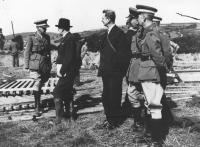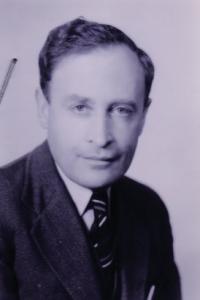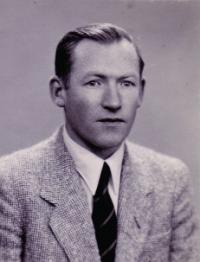‘Plato’s cave’?Ireland’s wartime neutrality reassessed
Published in 20th-century / Contemporary History, Features, Issue 1 (Jan/Feb 2011), The Emergency, Volume 19
Taoiseach Eamon de Valera and Minister for the Coordination of Defensive Measures Frank Aiken with Irish Army top brass at the Blackwater manoeuvres in 1942. In September 1939 de Valera reported to the Dáil that ‘we are in the centre of a theatre of war’.
(Military Archives)
F.S.L. Lyons argued in Ireland since the Famine (1971) that wartime neutrality led to Ireland’s ‘almost total isolation from the rest of mankind’. Philosophically, his ‘Plato’s cave’ metaphor captured a belief in Ireland’s moral failure by refusing to join a just war against Nazi Germany. Ireland, Lyons felt, instead looked inwards, absorbed by its own affairs, and in 1945 emerged blinking uncomprehendingly into the post-war world. The recently published seventh volume in the Royal Irish Academy’s Documents on Irish Foreign Policy (DIFP VII) series questions Lyons’s assertion, particularly so far as Ireland’s foreign service is concerned, that neutrality involved Ireland turning its back on the outside world during the Second World War. Ireland may have looked inwards when developing its foreign policy (all states do—it is national interest) but it did not develop its wartime foreign policy in a vacuum.
Department of External Affairs fully informed
The Department of External Affairs was not isolated from the global conflict. It received regular reports from Irish diplomats stationed in continental Europe. Indeed, the Second World War volumes of DIFP are by far the most international in the series to date. The war made Irish foreign policy converge with the European mainstream because Ireland had to take full account for the first time of the European and Atlantic world in which she was situated geopolitically. As de Valera reported to the Dáil in September 1939, ‘We are in the centre of a theatre of war’.
Campaign reports, many reproduced in DIFP VII, were a regular feature of confidential dispatches to Iveagh House. But even then Irish diplomats were one step removed from the conflict and their information was second-hand. When it came to air attack they were on the front line. A 1941 dispatch from London on the Blitz captured the horror of Luftwaffe bombing: ‘There is a very poor chance indeed of escaping even if one is underground’. An earlier dispatch reported the deaths of working-class Irish immigrants in the bombing of the East End of London. Reports received in 1943 from Irish diplomats in Berlin on the RAF carpet-bombing of Hamburg were filled with horror:
‘. . . my neutral colleagues are all of the opinion that air raids as at present carried out by [the] British are brutal and inhuman. If several hundred aeroplanes release their bombs simultaneously over the same area, it is obvious that most will fall on [the] civil population.’

William Warnock , Irish chargé d’affaires to the Reich, was to suffer in an air raid in November 1943, when the Irish legation in Berlin was destroyed by an RAF bomb. He was replaced by Con Cremin , who in turn was forced to flee Berlin in early 1945 in the face of the Soviet advance. (NAI)
The author of this report, William Warnock, was to suffer in an air raid in November 1943, when the Irish legation in Berlin was destroyed by an RAF bomb.
A more controversial area is the extent to which Dublin knew about the Holocaust. A coded Berlin telegram from May 1943 stated bluntly: ‘The Jews are deported East’. DIFP VII shows that while the level of detail now known about the treatment of Jews in Germany and occupied Europe is absent from wartime Irish diplomatic documents, they nonetheless show a knowledge of the dispossession, deportation and incarceration of European Jews in camps in Poland and the east of Europe.
Irish minister in Berlin Con Cremin came close to the frontline in early 1945 as Russian forces advanced on Berlin. With refugees pouring into the city, he reported to Dublin that they were
‘. . . travelling in conditions of great hardship often in open goods wagons and by temperature continuously below zero and there are accounts of many small children dying en-route—most Germans are terrified of what [the] Russians will do if they get here’.
From such reports Taoiseach and Minister for External Affairs Eamon de Valera and his top diplomats knew of the horrors and suffering of the Second World War in Europe. They held that Ireland, which they felt had already suffered a war
with Britain and a divisive civil war, would suffer further civil war if she joined the Allies of her own volition. Invasion and foreign occupation would be the inevitable result, an

Con Cremin
outcome too much to bear for those who remembered British troops on
the streets of Dublin.
Ireland still functioning within the world system
The Second World War was initially an Anglo-French war against Germany. De Valera believed that small states only suffered in large states’ wars. It was not for Ireland to take part in this great power struggle. Neutrality aimed to keep Ireland out of the conflict and find her destiny in a world at war. Neutrality did not mean that Ireland was extracted from the war zone. Though neutral, the state was still functioning within the world system. Instead, Ireland looked after its own war-related interests. These included preventing Britain from introducing conscription in Northern Ireland and protesting to the German foreign ministry on the sinking of Irish merchant shipping by U-boats and the bombing of Irish cities and towns by the Luftwaffe.
The defensive arming of Irish merchant shipping was discussed by the cabinet but ultimately turned down. German and British aircraft encroaching on Irish airspace were shot at by Irish defence forces’ anti-aircraft batteries. The strongly worded protest delivered to Berlin after the North Strand bombing hinted threateningly—more threateningly than a small, powerless state ought—that ‘the strain imposed on Irish–German relations’ by the bombing of Dublin ‘might well become insupportable’.
DIFP VII concludes as the post-war world dawns, with External Affairs aware that the threat from Nazism was being replaced by that from the Soviet Union. Maintaining Irish independence would remain problematic in the post-war years as the division of the world into two hostile camps became apparent. Yet far from blinking uncomprehendingly into the post-1945 world as Lyons suggested, de Valera, Walshe and External Affairs were aware of the unstable world emerging around them, of growing American hegemony in the west and of the new fault lines in Europe.
Post-war integration into the new world system
There is no sense in DIFP VII of Lyons’s assertion that ‘new thinking about the future’ passed Ireland by. There was, because it would limit the role of small states to the policies of great powers, considerable suspicion directed towards the newly founded United Nations. Ireland would nevertheless link itself to the Anglo-American and the Continental European traditions with their shared Christian heritage. Walshe feared a collapse of Christian civilisation in the face of the expansion of Communism in the looming Cold War. He wrote to MacWhite that ‘Everybody is thinking of the immediately post-war world with a certain heaviness of heart . . . we must be prepared for the worst’. Another world war seemed likely. The chief-of-staff of the Defence Forces, General Dan McKenna, requested, and the government considered, introducing national service to prepare Ireland better to face a third world war.
Despite failing to gain UN membership in 1946, the immediate post-war years, generally portrayed as a vacuum after the war, were a period of Irish integration into the new world system. The reach of Irish diplomatic missions increased from 1946 to 1955 to take in South America, Australia and northern and central Europe. Ireland participated in the Marshall Plan in 1948 and was a founder member of the Council of Europe in 1949. DIFP VII marks not the period of inward-looking isolationism that Lyons contended but rather a period of interaction with the world system through neutrality. Wartime neutrality was a complex policy which was continually redefined against an ongoing conflict. It could not be a policy forged in isolation. Nor was it covert belligerence. It was a policy that flexed with the international climate to allow Ireland to look after its international interests. Fully conscious of the changing international order, it put Ireland first. HI
Michael Kennedy is the Executive Editor of the Royal Irish Academy’s Documents on Irish Foreign Policy series.
Further reading:
M. Kennedy, Guarding neutral Ireland (Dublin, 2008).
Royal Irish Academy, Documents on Irish Foreign Policy VII, 1941–45 (Dublin, 2010).
C. Wills, That neutral island (London, 2007).ea
















